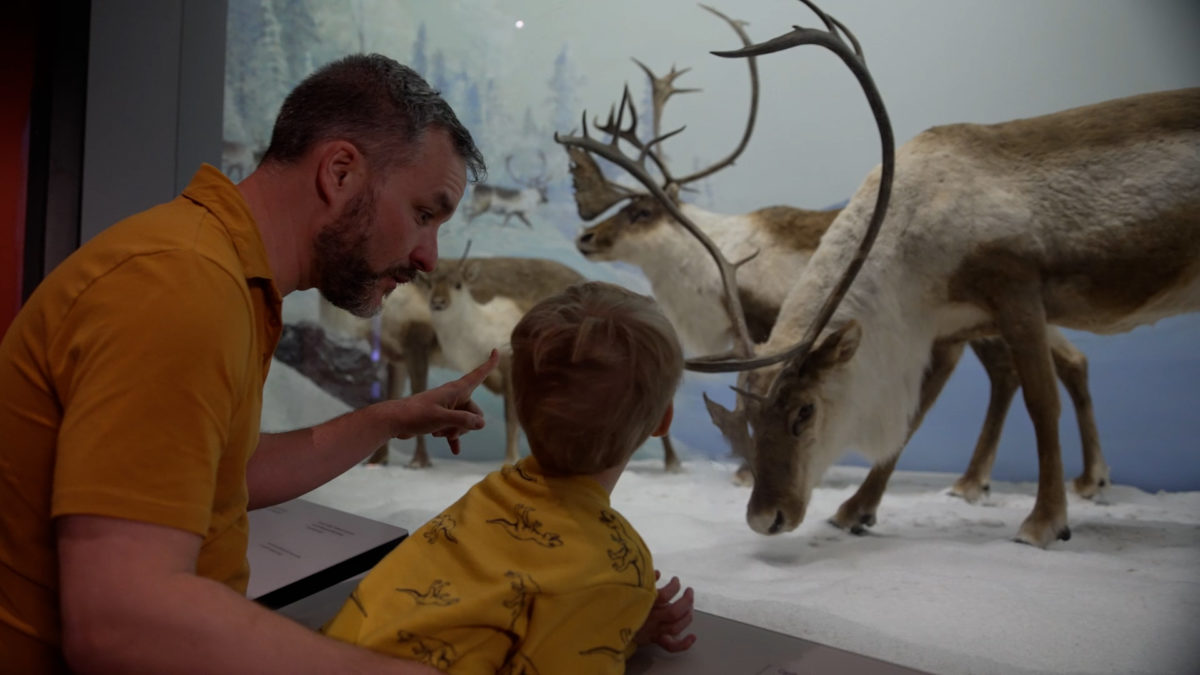Schedule
- March 2 2023 to September 2 2024
Wolves have long been a source of fascination for many people.
Widely regarded as fierce predators, wolves are also known for their complex social lives and ability to thrive in all types of environments.
Wolves!—a new exhibition developed by the Canadian Museum of Nature—explores the evolution and adaptations of these charismatic animals through specimens, cultural stories, video and scientific research that highlights studies by museum experts Kamal Khidas, Ph.D., and Danielle Fraser, Ph.D.
Also featured are stunning images by the renowned photographer Michelle Valberg.



 Michelle Valberg © Michelle Valberg
Michelle Valberg © Michelle Valberg
About Wolves!
In this exhibition, you will learn about
- Wolf evolution
- Research on wolves
- Wolves in culture
- Wolf domestication
- Wolves today
- Wolf conservation and the future of wolves—can they continue to adapt in order to survive in a rapidly changing environment?
What is a wolf?
A wolf is a canid that is a member of the dog family. More specifically, it is classified as a Canis, a genus that also includes dogs and coyotes. Wolves are the largest members within the Canid family. They are known for their exceptional intelligence and great sensitivity, complex social structure, living in packs, and communicating through an intricate language of movements, postures, howls, and various other sounds.
How many species are in Canada?
Wolves are found in many parts of Eurasia and Africa.
In Canada, there is one species, the Grey Wolf, Canis lupus, found currently across almost the whole country, and also in the contiguous United States.
Here at the Canadian Museum of Nature, we have one of the world’s largest collections of grey wolf specimens, collected from across Canada and beyond, and over more than 150 years. By studying their morphology and genetics, we can see that they are all the same species, and that even the eastern wolf or the Arctic wolf are the same as the grey wolf.
In North America, in the south-eastern United States, one can also find the red wolf, Canis rufus.
Coyotes, dogs, grey wolves, what is the difference?
The grey wolf differs from the coyote in terms of genetics and skull and body characteristics: smaller size, smaller feet and skull.
Other differences are in body size, pelage pattern, howling vocalizations, and, above all, social organization, which is more elaborate in the grey wolf. Coyotes only occur in North America, while grey wolves are found in vast areas of the northern hemisphere.
As for the dog, it is genetically very similar to a wolf, though some slight differences can be detected.
Can wolves and coyotes hybridize?
Both species have been hybridizing in the wild for the past several thousand years.
This is made possible because they both diverged from a hypothetical common ancestor about one million years ago, which is relatively recent in terms of evolutionary process. Hybrids can be recognized either genetically or morphologically. They are viable and can reproduce and mate in the wild with wolves and coyotes.
Some hybrid forms, coywolves in a sense, occur in cities and other areas populated by humans. They have to certain limits the larger body of a wolf, and temperament of a coyote. So, they are stronger than a typical coyote and less shy than a typical wolf and can be nasty to humans.
In northeastern America, including Canada, the eastern coyote is larger than the western coyote due to hybridization with the grey wolf.
What makes wolves so special?
Wolves are special because they are hypercarnivores and top predators. They maintain healthy ecosystems by regulating their prey population densities, thus avoiding overgrazing for instance, and ensuring balanced natural processes.
Wolves are also special to us because we share with them so many behavioral and psychological traits, as well as feelings, emotions, and a fascination with one another. This is why they were the first animals that we have domesticated more than fifteen thousand years ago.
Wolves – cool facts
Explore the differences between wolves and coyotes, the hybridization that happens between the two species and much more in this video with Kamal Khidas, Ph.D., curator of the Vertebrate Collection at the museum.
Did You Know?
- Wolves and coyotes diverged from a common ancestor 1.5 million years ago.
- The Canadian Museum of Nature has one of the largest wolf-specimen collections in North America. The museum holds over 2500 wolf-related objects.
Who’s a Good Dog?
Want to see your pup in the museum and online?
Use both of these to help us find your photos: @MuseumOfNature and #WolfToWoof.
Your dog’s photo could be displayed right in the Wolves! exhibition and in this photo gallery.





